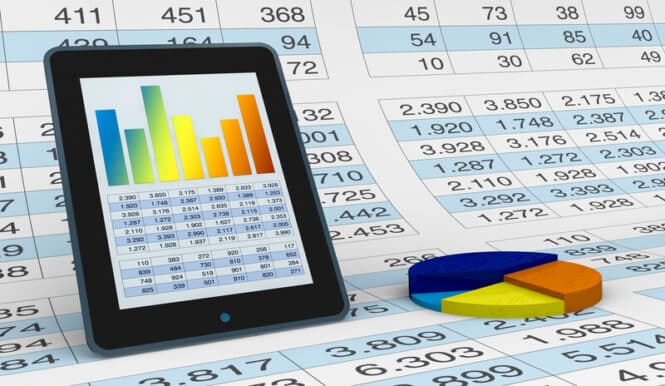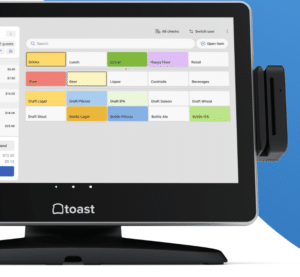
Toast POS and NCR Kiosks and GRUBBRR
We read an interesting analysis of a recent shareholder meeting NCR held which encompassed kiosks (we have to think any new ones are via GRUBBRR kiosks and Samsung) and for the first time, digital menu boards. We have covered NCR in other related financial and SCO-related articles like Aloha Outage attack, New Lowes SCO. and Amazon Self Checkout Whole Foods.
We subscribe to ReformingRetail and definitely recommend subscribing for getting an additional point of view.
At the end of this reprint (thanks RR), we’ve included a “bonus” section on Toast and its sudden reversal and removal of the imposed order fee. Restaurants are quick to change providers and actions by Toast could well accelerate that (from them to someone else, or to someone else but not Toast).
All The Red Flags We See As NCR Preps for Split
NCR is splitting its company up after it failed to find a suitor.
Because, really, who wants to own a turd?
Dung beetles don’t often become private equity managers (PE’s are more likely to be sharks than anything).
As we piece through NCR’s Q1 2023 earnings call we can’t help but see all the red flags in the business.
In order if discussion:
NCR delivered 1% YoY growth, or 4% if you like currency manipulations .
Inflation over the past year averaged 7%. So NCR can’t even match inflation?
God, how bad are things over there…
We continue to have success transitioning from onetime perpetual sales into multiyear subscription-based revenue stream. The nature of these contracts shifted $60 million of high profit revenue from what would have been previously recognized upfront to recurring revenue that will convert over the next several years.
Tim Oliver, CFO
This is a great cop-out for lower revenue numbers, but the question we have is NEW revenue: how much of this revenue is expansion vs new?
Because everywhere we look NCR is bleeding marketshare.
Then Tim comes back to brag that, if not for a strong dollar and a “success transitioning from onetime perpetual sales into multiyear subscription-based revenue stream” NCR’s revenue would have been up 7%.
Which is par with inflation.
NCR is focused on free cash flow.
Why?
It has an enormous mountain of debt to service.
NCR generated $209 million in free cash flow in the quarter…
Over the past two quarters, we have generated over $400 million of free cash flow, allowing us to reduce financial leverage ahead of the separation.
Mike Hayford, CEO
Back in October, we described our desire to generate at least $500 million of free cash flow before the separation transaction to reduce our financial leverage. In the first two quarters, of those $500 million, we’ve already generated $400 million of that bogey.
Tim Oliver
NCR has been cutting labor to hit these goals and pay their debts.
Just so long as management doesn’t take a pay cut.
NCR retail wins are a joke
NCR is rolling out more self-ordering kiosks to existing customers.
That’s it.
No talk about winning new POS business or any other meaningful metrics.
In retail, we continue to deliver on our strategy to be the retail platform company of choice. During the first quarter, NCR expanded its relationship with the second biggest retailer in the U.K. The customer committed to increasing the number of NCR self-checkout units while also signing a special services agreement to a multiyear subscription model to help transform their in-store solutions.
Mike Hayford
We get further hints to NCR’s retail struggles in Tim’s comments on retail lanes:
We increased our number of platform lanes by 33,000 lanes or 125% year over year. At the time of conversion, platform lanes drives an incremental $400 of ARR for an increase of $12 million versus last year. The platform lane increase was driven by rollouts in major convenience and fuel customers.
While platform lanes currently represent less than 5% of our total lanes, we see accelerating momentum for the conversion of our traditional lanes and have a substantial lane conversion backlog. And once on the platform, the opportunity to upsell and cross-sell new features and functionality drives further ARPU expansion.
Tim Oliver
So self-checkout revenues are flat and you’ve only penetrated 5% of your customer base with your newer lanes?
Hospitality is a disaster
NCR mentions useless metrics as if we aren’t smart enough to know any better.
In SMB, our payment attachment for new customers remained roughly 90%, driving a 50% increase of payment site. In enterprise, we expanded our relationship with the world’s largest food — fast-food chain to be the sole provider for digital menu boards in the U.S.
Mike Hayford
NCR should have 100% payments attach rates. What 10% are they losing on payments?
Then their big enterprise “win” was a company using NCR for… drumroll…
digital menu boards.
How often has NCR ever talked about digital menu boards as a successful line of business?
The answer: never.
Because it’s a line of business nobody wants to be in.
Commoditized hardware, very little software, and terrible margins.
Mom: how did you do on your test?
NCR: Oh! I failed! I got the lowest score in the class!
Mom: …
NCR: well the class snake couldn’t even write his name on the test
Mom: oh wow, I am so impressed that you beat the snake! Let me increase your allowance for being so awesome even though you underperfomed every other fucking mammal in the room
Given NCR’s anemic performance we’d bet the 6% YoY revenue increase in hospitality is coming exclusively from payments attach rates.
Hospitality revenue increased $12 million or 6% year over year as reported and 7% adjusting for currency, driven by an increase in services and software revenue, including cloud services and payment processing.
Tim Oliver
And once again, we get no indication on NEW sites: just an increase in “platform sites” which is a creative euphemism to avoid saying the obvious:
What’s interesting are the payments margins, which NCR pegs at $4,000 per year.
For a merchant doing $1M in GPV, this would be 40 bps of margin.
Great for NCR, not great for merchants.
Might as well fork over the extra 15 bps (and a $1 fee to each online ordering customer) and get a way better POS technology in Toast.
Digital Banking has a business model problem
The only growth in NCR’s digital banking business came from an increase in user seats.
Digital banking revenue was flat year over year. The two-thirds of our revenue that is driven by user count increased in this quarter on higher used accounts and led to higher recurring revenue.
This increase was offset, however, by lower nonrecurring revenue that can be lumpy. Adjusted EBITDA was down 13% year over year…
Tim Oliver
Bro, you heard of this thing called AI?
Banks are going to be doing more with less.
Expect the seat count to come down over the next few years as white collar establishments like banks adopt AI.
ATMs are dead
NCR is switching their ATM business model to as-a-service for a recurring revenue component.
Whatever.
Their growth is coming primarily from international markets – in particular India – where we have concerns of cash displacement.
ATM-as-a-Service units increased 293% year over year to 17,000 units. We experienced significant growth in India and incremental growth in the United States.
Tim Oliver
Ever heard of this thing called UPI?
It’s the global case study for how to enable digital account-to-account transfers and it just so happens to be in India.
UPI’s growth is compounding 50% annually and it represents 40% of all payments.
BCG expects UPI to triple to $10T of transactions by 2026, meaning cash will be dying.
In a span of just six years, India, primarily a cash-based economy, now leads the world in real-time digital payments, accounting for almost 40 per cent of all such transactions.
The mass adoption of UPI during the COVID-19 pandemic has extended far beyond the urban to even rural India, an effect that left the experts in amazement.
As the success of the UPI grows, so does its attractiveness and acceptance by other countries; for instance, on February 21, 2023, India and Singapore launched cross-border connectivity between UPI and its equivalent in Singapore called PayNow, enabling low-cost and faster cross-border transactions.
https://economictimes.indiatimes.com/news/economy/finance/indias-digital-payments-market-will-more-than-triple-to-10-trillion-by-2026-report/articleshow/98522718.cms?from=mdr
LOL NCR.
Then you’ve got this more direct and recent analogue of Diebold Nixdorf, NCR’s ATM competitor, declaring bankruptcy.
Diebold has struggled with debt since it acquired Germany-based Wincor Nixdorf AG for $1.8 billion in 2016. After taking on significant debt in that deal, the newly-combined company faced flat or declining sales in its core business of selling ATMs to banks and checkout machines to retail customers.
https://www.reuters.com/legal/atm-maker-diebold-nixdorf-files-bankruptcy-cut-2-bln-debt-2023-06-01/
Too much debt, shitty business model, terrible execution.
Remind you of anyone?
BONUS
TOAST POS
Full Article and below is Excerpt
We were told Clover suspended its ordering fee indefinitely, but being a payments company they haven’t bothered to supply any definitive declaration.
While Toast merchants might be celebrating this in the short term, hear us clearly:
Toast lacks all vestiges of anything resembling morality, and Toast merchants will pay for this shortfall.
What transpired with the $0.99 fee was but a brief taste of what those of us in the industry already know: Toast is truly a monster.
Toast merchants by and large have no idea what the hell is going on and the pushback on Toast’s fee was from a very small percentage of Toast merchants who bothered to (probably accidentally) read an email from Toast.
The problem for Toast merchants now is that Toast is on track to lose $300M this year.
Precisely the amount of revenue the fee would close.
Toast cannot sustain this rate of losses for more than 3 more years before they have to shore up the balance sheet.
Frankly, we’re curious to see how Toast takes this learning to pummel merchants on payments.
We bet that within a year Toast will find a way to make the revenue through direct merchant fees, likely mandating the $0.99 fee but letting the merchants make the call on eating it.
Why did Toast drop the fee?
Not because merchants pushed back.
And probably not because President Biden has made comment on the frustration with unscrupulous fees, even though next year is an election year and this might mean that the FTC takes a closer look.
Sure, some state representatives are taking interest, but honestly only a very small number of Toast merchants will even notice, and even fewer of those can do math.
The legitimate concern, however, relates to taxation:
Toast restaurants are required to recognize the revenue of these fees and remit taxes against such revenue, but they’re not seeing any of the revenue to offset the taxes.
Let’s do the math to show you how bad this is.
A merchant doing $1M a year does $200,000 in digital native orders, or 20%, and that might be conservative.
At a $30 average check, that’s 6,600 checks, or $6,600 in revenue at a dollar fee per order.
Well, now the merchant now has to pay taxes on that $6,600.
What percent of the merchant’s margins were just eroded in additional taxes?
And what happens when a customer wants a refund?
Is Toast managing that?
Who reports changes to the tax authorities?
Does this complication give governments the impetus to directly integrate to POS software like they do in Europe (so that the authorities can audit the taxes due)?
This was going to be a real compliance headache and it puts a target right on the backs of Toast merchants.
We don’t think Toast wanted this exposure in this manner.




